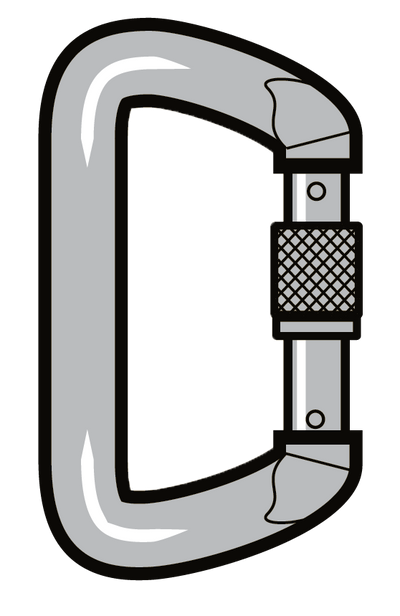Ask a Pro: How did the NFPA come up with a 15:1 safety factor?




Update - 15 Oct 2020
To reflect changes to the NFPA 1982 (2017 ed.), this blog has been updated.
Watch for upcoming information on the NFPA 2500 that is to supercede this standard - due 2022
Thanks a lot to Martin Côté-Brazeau from Haut Acces (QC) for the question that prompted us to refresh the post
On June 27, 1980 FDNY Rescue 3 was called out to a high-rise fire in Harlem, New York City. During the incident, firefighter Gerry Frisby became trapped by the fire on the 7th storey and the Rescue 3 crew, using a 1/2" diameter 150' long nylon rope, lowered firefighter Larry Fitzpatrick down to pull out Frisby. But under the combined weight of both men, the rope snapped, sending both falling to their death.
This tragic event was one of the reasons that prompted fire services to request the NFPA Technical Committee to develop a standard for rescue ropes. NFPA 1983, the Standard on Life Safety Rope and Equipment for Emergency Services (originally called Standard on Fire Service Life Safety Rope and System Components) was created and first released on June 6, 1985. Prior to this standard, fire rescue services had no agreed-upon definitions or standards for the equipment used in rescue-type scenarios. Nearly 30 years later, this document has seen many revisions and updates, and has become an important driving force for the continued improvement in rescue equipment capabilities.
So where do the numbers 15:1 come from? It's hard to say for certain but we do know that in the wake of the public deaths of FFs Frisby and Fitzpatrick, fire services recognized the need to standardize how rescue operations, specifically those involving ropes, were conducted. The first edition of the NFPA 1983 was originally intended to give requirements only for ropes used by the fire service. However, it quickly became apparent that requirements for all other rigging components - hardware, software, and harnesses - would also be needed. As NFPA 1983 has continued to undergo updates and revisions, the standard has grown to encompass a much broader range of equipment, now stipulating requirements for design, construction, and performance.
At the time of creation of NFPA 1983, 10:1 safety factors were commonly observed in many other industries, but the NFPA committee pushed to have that requirement raised to 15:1 specifically for ropes. The most plausible explanation for this is because knots placed in a rope reduce its strength by around 1/3, reducing 15 by 1/3 would still maintain a 10:1 safety ratio.
The most recent 7th edition (2017) sought to clarify the definitions around General-Use equipment, and (what is now called) Technical-Use. Check out our blog post about the change from Light-Use to Technical-Use!
NFPA 1983 calculates the 15:1 safety factor by using a 300 lb load for each rescuer or patient on the rope system. Rope and software meeting the General-Use category is therefore capable of supporting a 2-person load (ie: 600 lbs):
2 x 300 lbs x 15:1 safety = 9,000 lbs (roughly 40 kN)
Rope and software meeting the Technical-Use category is able to support a 1-person load (ie: 300 lbs):
1 x 300 lbs x 15:1 safety = 4,500 lbs (roughly 20 kN)
You might notice that some rescue hardware items, like carabiners, meet and exceed this 40 kN requirement, while other hardware pieces, like pulleys and descent control devices may not.
So how do they keep their General-Use rating while not supporting the 40 kN? Unfortunately a satisfactory answer to the question is hard to find, and reading through the NFPA 1983 document itself doesn't reveal much more information other than how helpful Tylenol is for a headache.
What is clear is that the Technical Committee that writes the 1983 Standard groups different types of equipment differently:
- Ropes and software need to meet the 40 kN requirement for General-Use and 22 kN for Technical-Use;
- Carabiners need 40 kN (G) as well along with a minimum 11 kN strength on the minor axis or with the gate open (22 kN for Technical-Use with 7 kN minor axis or gate open);
- Pulleys only need 36 kN (G) and 22 kN strength for the becket (18 kN and 11 kN respectively for the Technical-Use designation);
- Portable anchors also need the same 36 kN (G) or 18 kN (T) strength;
Clearly it's not quite as straight forward as 2 x 300 x 15, but if you're unsure, it's a great start.
What's maybe even more comforting is knowing just how much research, testing, and review goes into making sure that the equipment we use for rescue is top of the line and up to the challenge.
The only question is...are you?
Stay safe
- The Dynamic Rescue Team
Photo credits: Findagrave.com
Also in Blog

Check This Out - Freakin' Beacon
The "Freakin' Beacon"
User feedback was the driving force behind this design, Koehler BrightStar tells us, and it was important to have a product that was lightweight, durable and bright.
Weighing in at just 97 grams (yes, that includes 2x AAA batteries) and less than 7cm long, this unit is amazingly powerful for its small size.

RECOMMENDATIONS FOR DISINFECTING YOUR EQUIPMENT - Petzl
During the current COVID-19 crisis, many of you have sent us questions on how to disinfect your equipment. Here are the basics that you need to know.


